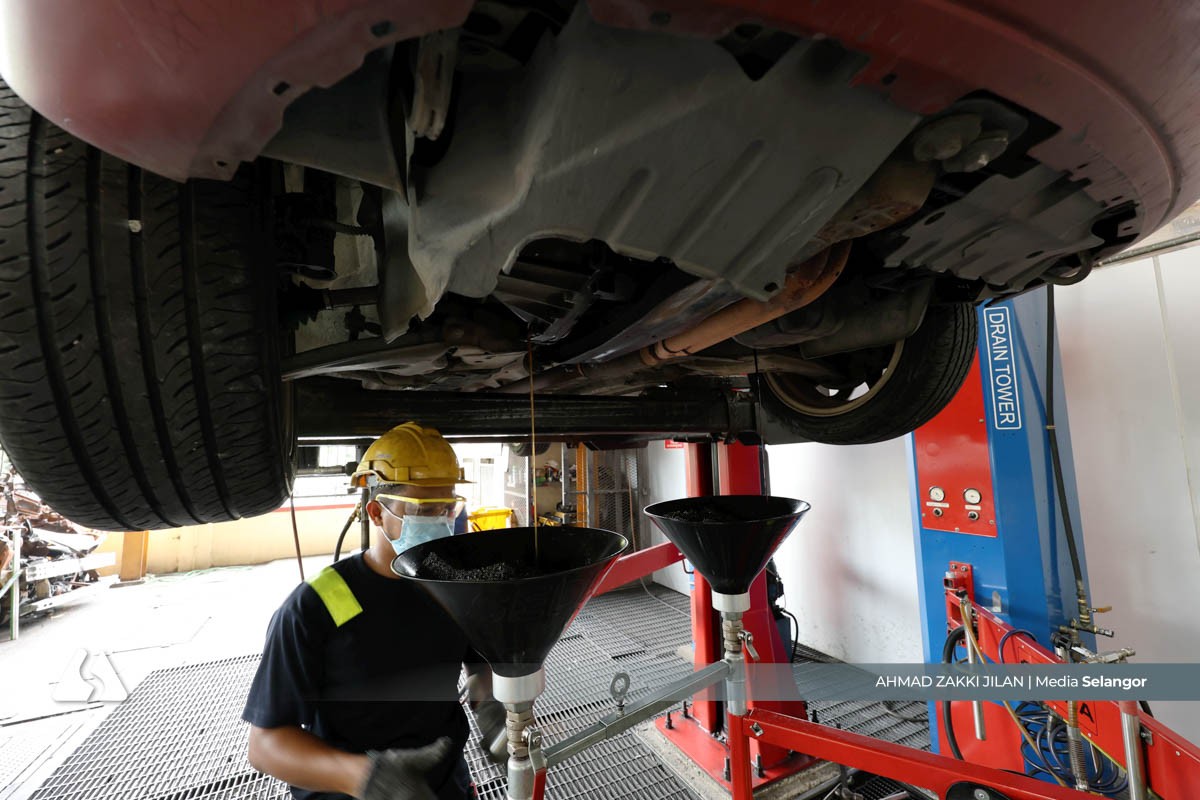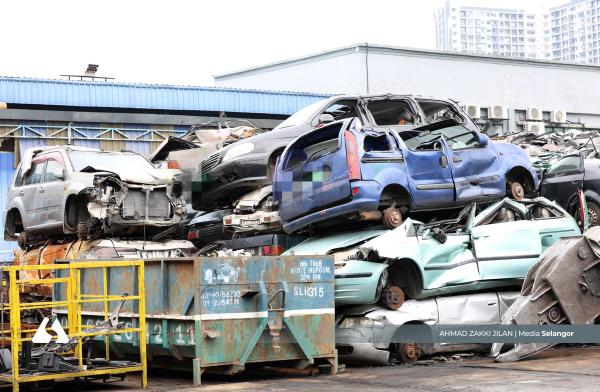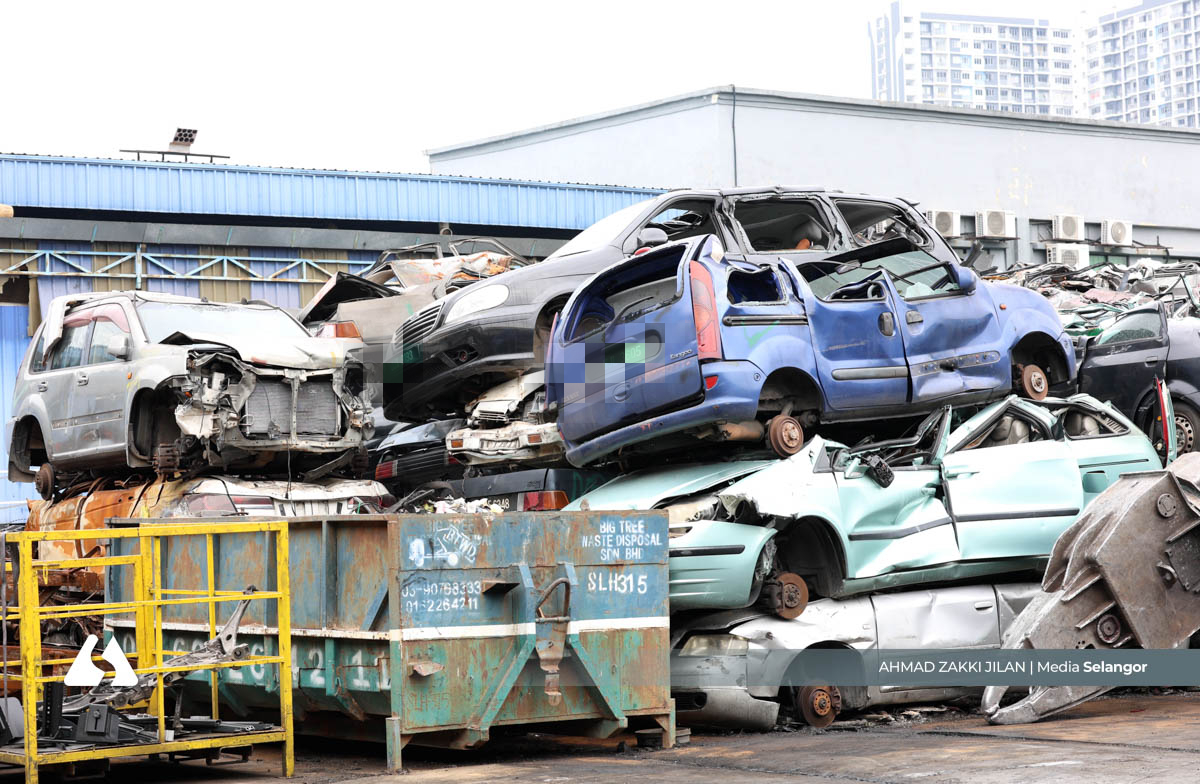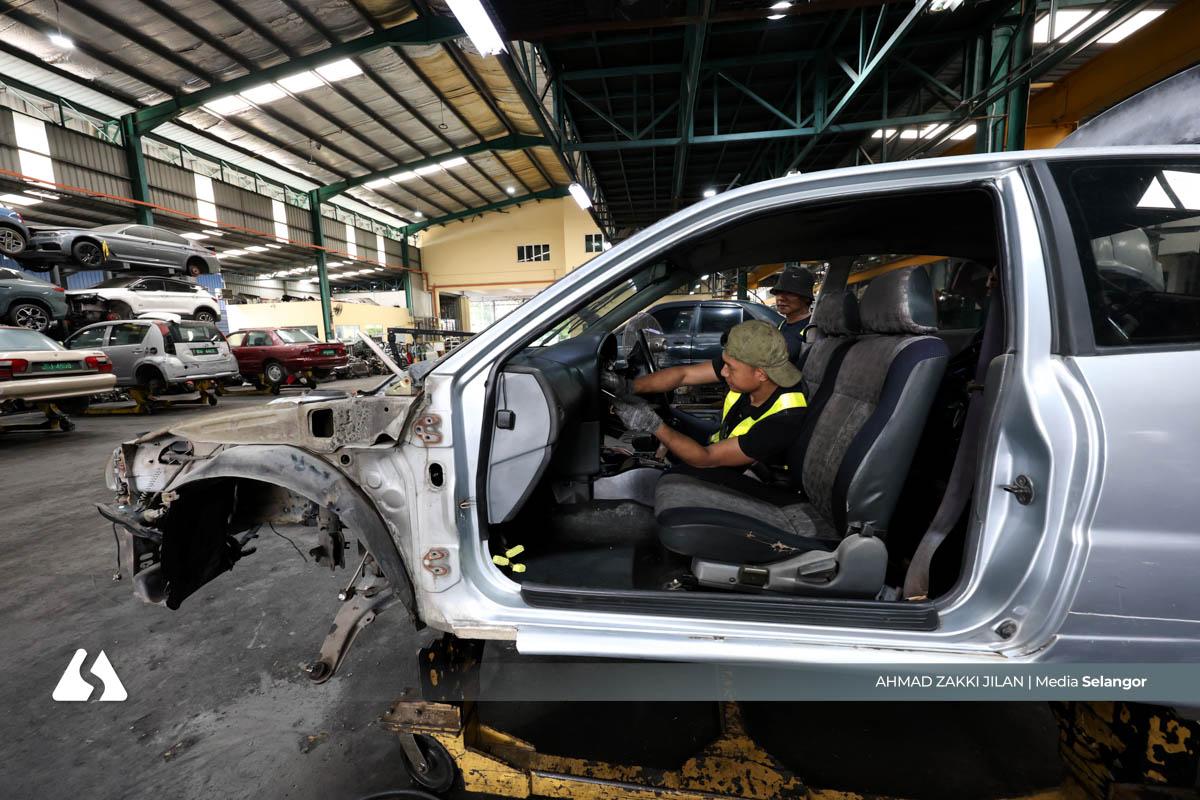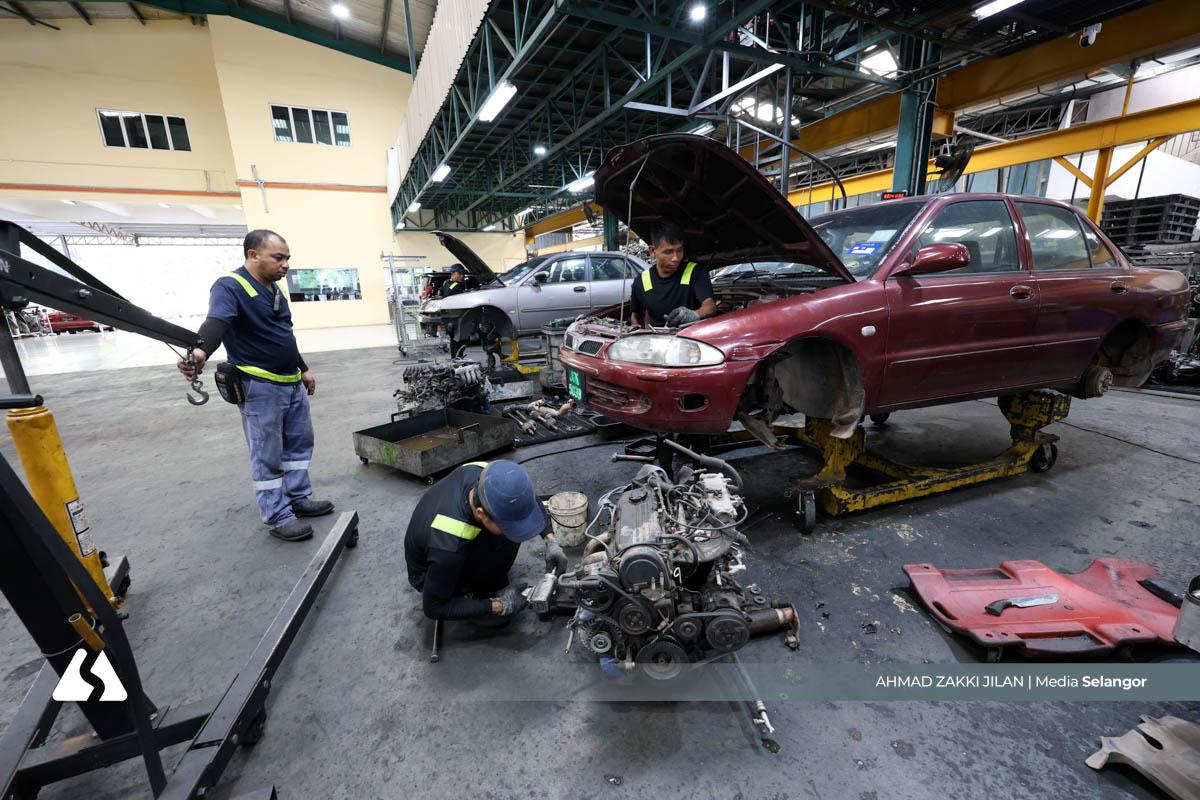SHAH ALAM, Oct 23 — With the growing number of vehicles each year, abandoned cars have become “hidden waste” that pollutes the environment and tarnishes the image of cities.
Yet, these old and neglected vehicles — often seen as worthless — actually contain a wealth of recyclable materials which, if managed properly, can indeed be “transformed from waste into resources.”
To address the accumulation of abandoned vehicles, the Kajang Municipal Council (MPKj) has implemented the End-of-Life Vehicle (ELV) policy since 2021. Under this policy, all towed vehicles are handed over to licensed companies approved by the Environment Department (DOE) for proper dismantling and eco-friendly disposal.
Car Medic Sdn Bhd, based in Kajang Technology City, is one of Malaysia’s first Authorised Automotive Treatment Facilities (AATFs) certified by the DOE. Since its establishment in 2020, the company has adopted a systematic disposal process that meets environmental standards: dismantling end-of-life vehicles, recycling usable components, and safely disposing of hazardous materials, thus preventing secondary pollution.
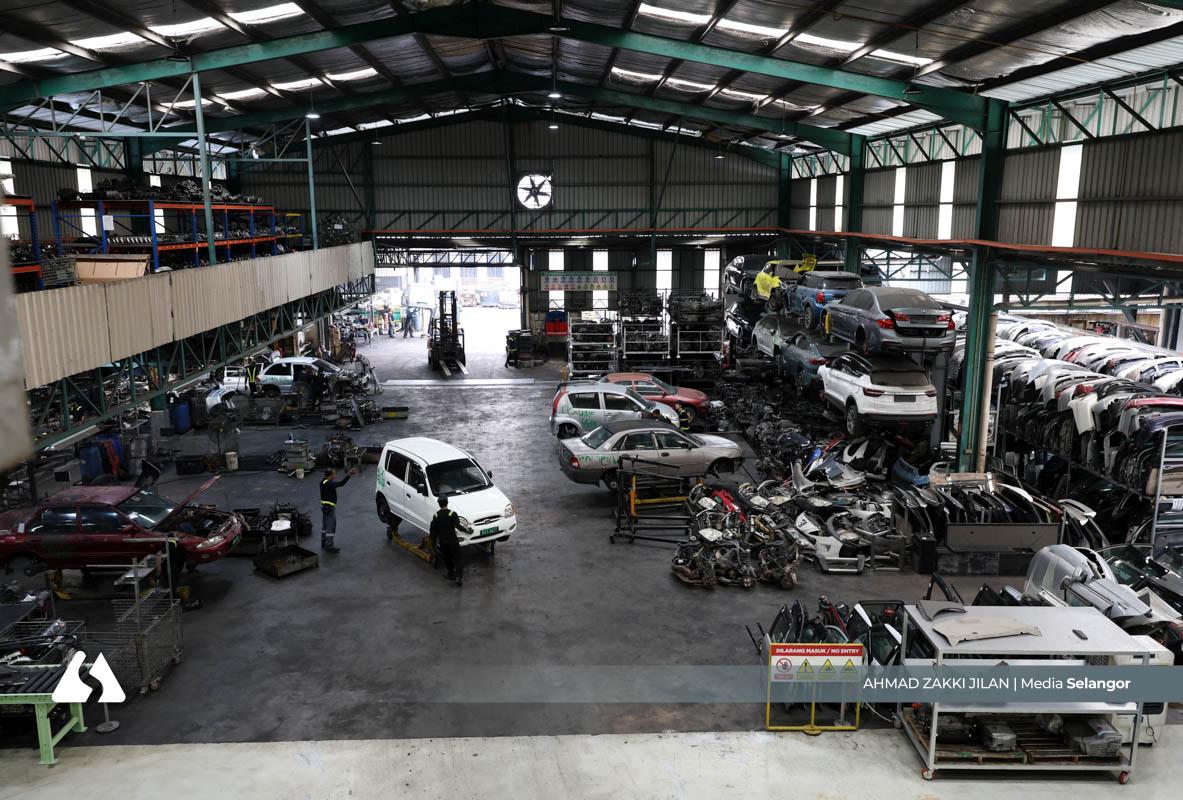
One vehicle, dozens of recyclable components
Many assume that an old car is nothing more than scrap metal, but in fact, a single vehicle can contain dozens of recyclable materials, including:
⦁ Metals: steel, aluminium, and copper.
⦁ Plastics: bumpers, dashboards, fuel tanks, and decorative panels.
⦁ Glass: windscreens and windows.
⦁ Rubber: tyres and belts.
⦁ Fluids: engine oil, brake fluid, transmission oil, and coolant.
⦁ Batteries and electronics: lead-acid batteries, control modules, and sensors.
Once processed, these materials can be repurposed as industrial raw materials or reused directly, reducing resource wastage and promoting the growth of the automotive recycling industry.
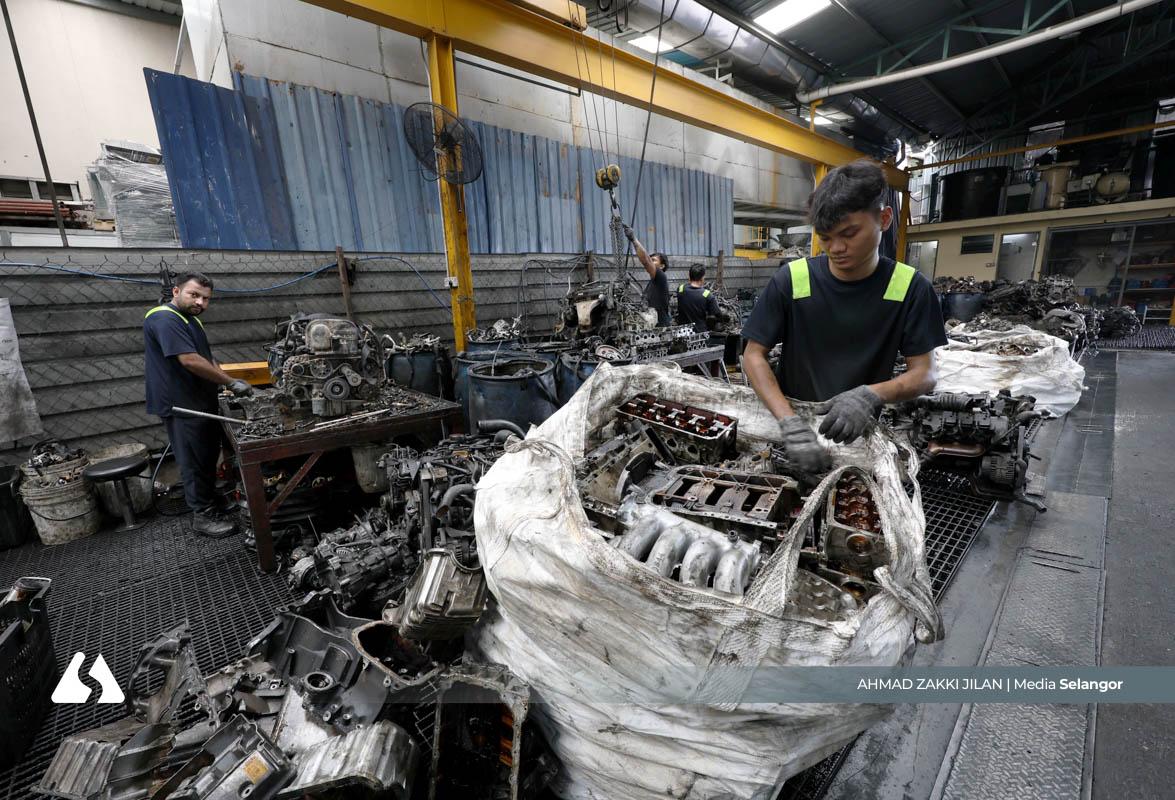
Strict Environmental Standards
During Media Selangor's visit to the Car Medic facility, the operations were highly organised: the floors were spotless, free of oil stains, and all vehicles were neatly arranged according to procedure.
According to the company, “If there is even a drop of oil on the floor, it must be cleaned immediately.”
Each vehicle disposal follows seven key steps:
1. Verification of vehicle identity to ensure legal disposal.
2. Depollution process — removing all hazardous fluids.
3. Recovery of refrigerant gases (CFCs/HFCs) to prevent ozone damage.
4. Removal and relabelling of reusable components.
5. Separation of tyres and rims.
6. Dismantling of the main structure using heavy machinery.
7. Segregation of metals and oil residues for final treatment.
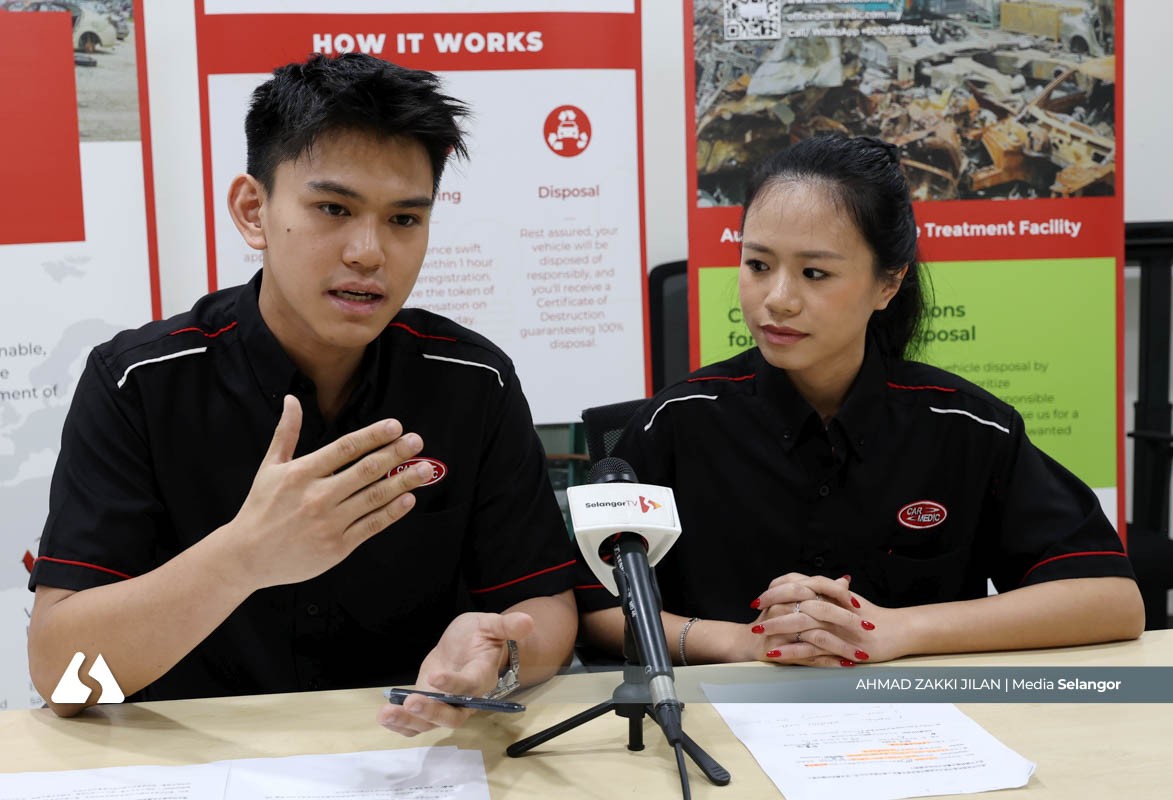
Legal and reassuring for vehicle owners
Car Medic's directors Kwan Kian Heng and Joey Kwan said that every vehicle dismantled at their centre undergoes a proper documentation and disposal process, with an official certificate issued as proof.
“We use an automated depollution system capable of extracting all fluids in just 10 minutes, after which our staff manually dismantle the vehicle for around 20 minutes,” they said.
Following the initial dismantling, the vehicle is sent to a large shredding machine for complete separation, ensuring a safe, efficient, and environmentally responsible disposal process.
“Each vehicle owner will receive a Certificate of Destruction upon completion, guaranteeing their rights and peace of mind,” said the Kwans.
Car Medic emphasised that all its procedures comply with European environmental standards for the ELV system and ensure that there is no soil or river contamination.
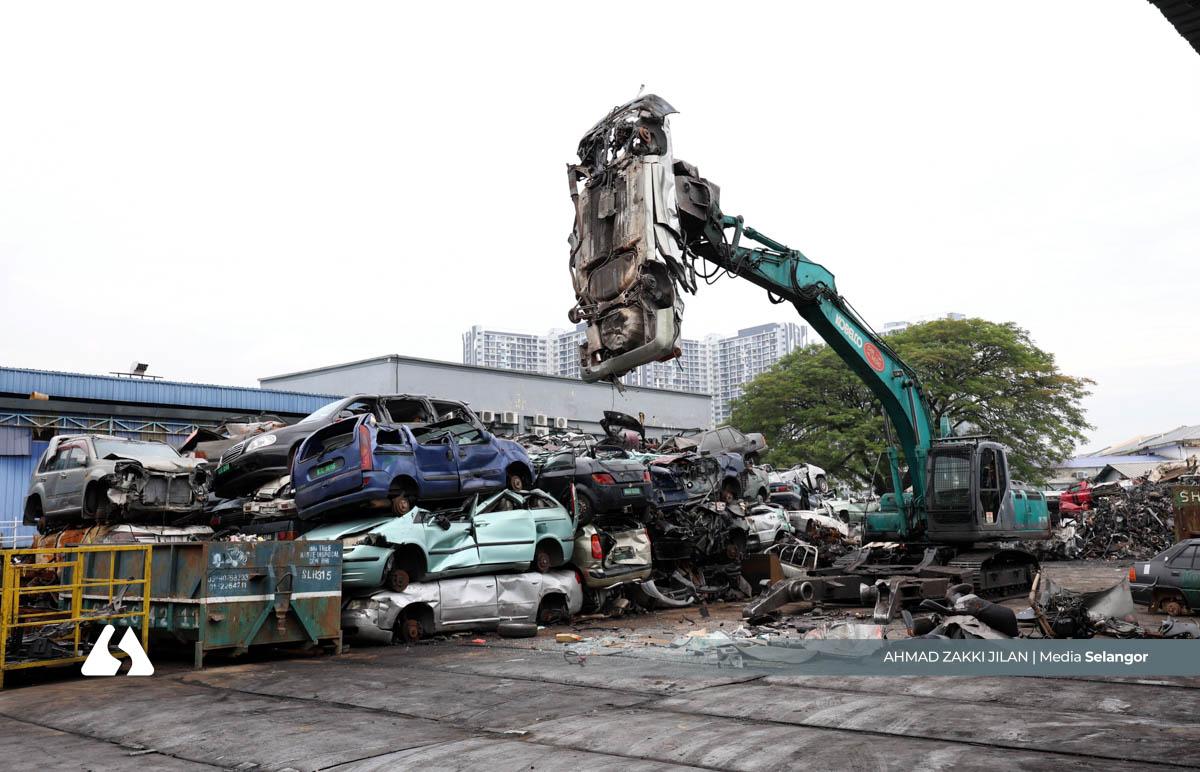
An average of 30 vehicles processed daily
With the surge in abandoned cars, Car Medic now processes at least 30 vehicles per day.
The Kwans noted that, given the high population density and large number of vehicles in Selangor, the issue of abandoned cars has become increasingly urgent.
“If not dealt with promptly, they not only occupy public parking spaces but also mar the city’s appearance.
“We are currently working with MPKj and hope to expand this model throughout Selangor. We also welcome cooperation with other local authorities to accelerate the removal of abandoned vehicles and improve the community environment," they said.
